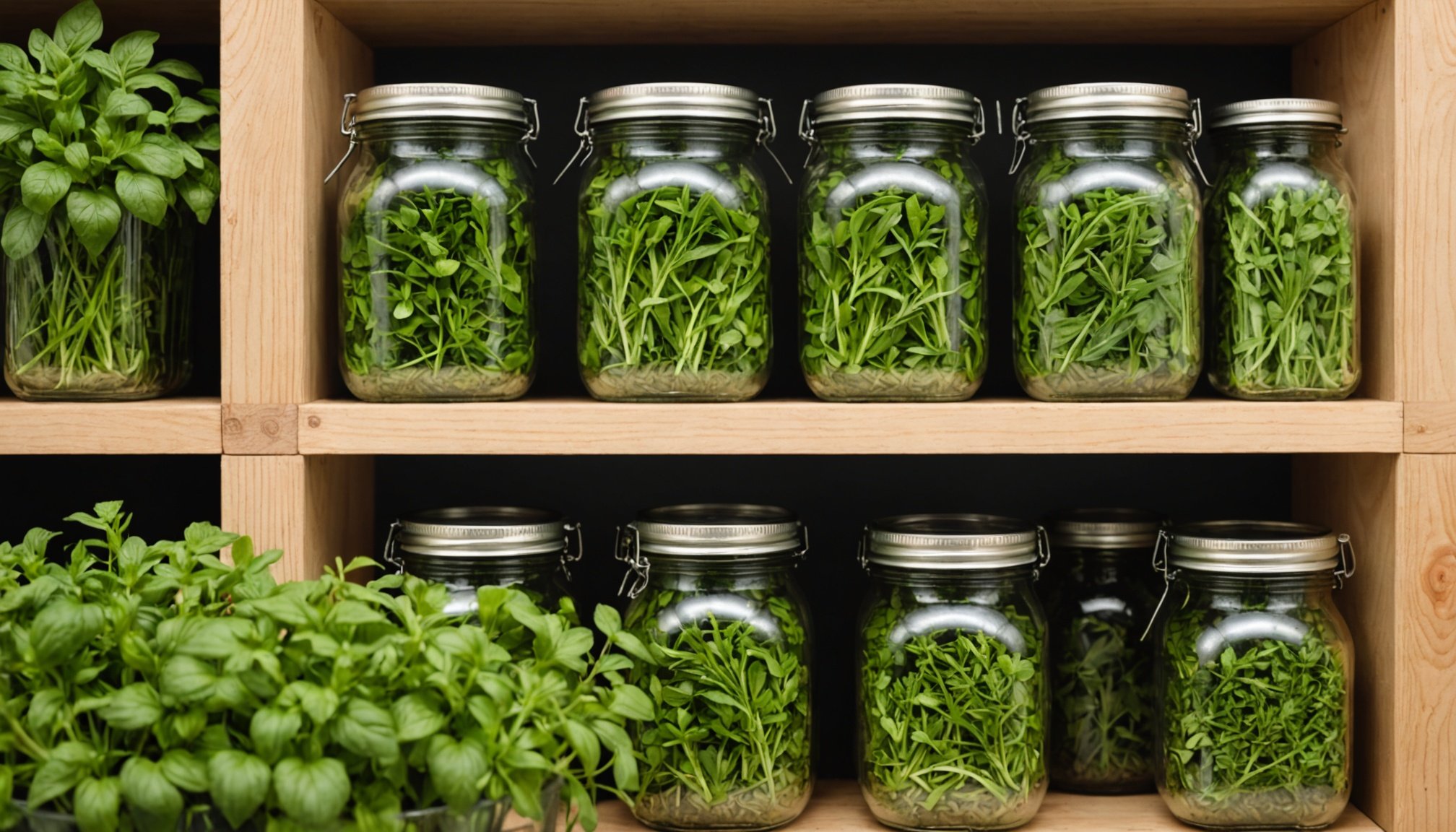In the culinary world, fresh herbs bring an aromatic touch that can transform any dish from ordinary to extraordinary. However, keeping them fresh and fragrant for extended periods can be a real challenge. By understanding the best techniques to store fresh herbs, you can effectively preserve their flavor and vibrancy, reducing waste and maximizing their use in your kitchen. This guide will explore practical methods to extend the shelf life of your favorite greens, providing you with the knowledge to keep them fresh for longer.
Understanding the Nature of Fresh Herbs
Fresh herbs are delicate and often require specific conditions to maintain their freshness and aroma. They can be broadly categorized into two types: tender herbs and hardy herbs. Tender herbs, such as basil, parsley, and cilantro, have soft stems and leaves, requiring a different storage approach than hardy herbs like rosemary, thyme, and sage.
Topic to read : How can I ensure my kitchen is safe for pets while cooking?
When storing fresh herbs, temperature and moisture levels play crucial roles in determining their longevity. Understanding these factors can help you choose the most suitable storage method:
- Temperature: Most herbs prefer cooler temperatures, but some, like basil, are sensitive to the cold and may fare better at room temperature.
- Moisture: Balancing moisture is key; too much can lead to mold, while too little can cause wilting.
Consider the specific needs of each type of herb you wish to store. With a bit of knowledge, you can easily extend their shelf life and utility in your kitchen.
Also to discover : What are the key differences between gas and electric stoves for home cooking?
Best Practices for Storing Tender Herbs
Tender herbs, with their soft and fragile leaves, can quickly become a soggy mess if not stored correctly. For these herbs, it’s all about finding the right balance between moisture and air circulation.
- Refrigeration in Jars: Start by trimming the ends of the herbs and placing them in a jar with an inch or two of water, like a bouquet. Cover loosely with a plastic bag and store in the refrigerator. This method is particularly effective for herbs such as parsley, cilantro, and mint.
- Wrapping in Damp Paper Towels: Gently wrap these herbs in damp paper towels before placing them inside a plastic bag. Store them in the fridge, ensuring not to seal the bag completely to allow for air circulation.
Both these methods help maintain the herbs’ moisture while ensuring they don’t become waterlogged. These approaches can extend their freshness significantly, enabling you to enjoy their aromatic properties for longer.
Optimal Storage Techniques for Hardy Herbs
Hardy herbs, such as rosemary, thyme, and sage, bring robust flavors and require slightly different storage techniques than their tender counterparts. Their thicker leaves and woody stems allow them to withstand slightly drier conditions.
- Refrigeration with Minimal Moisture: Wrap hardy herbs in a dry paper towel and place them inside a sealed plastic bag. Store in the refrigerator. Unlike tender herbs, they do not require a humid environment.
- Freezing for Long-Term Storage: If you have an abundance of hardy herbs, consider freezing them. Wash and thoroughly dry the herbs, then chop them and store them in small containers or ice cube trays with a bit of oil or water for future use.
Both methods ensure that your hardy herbs maintain their essence, allowing you to enjoy their flavors in multiple culinary endeavors.
The Role of Drying and Infusing in Herb Preservation
For those looking to store herbs long-term and maintain their intense flavors, drying and infusing are excellent methods of preservation. These techniques not only extend the shelf life of your herbs but also intensify their natural flavors.
- Drying: A method particularly suited for hardy herbs. Simply tie them in small bundles and hang them upside down in a warm, well-ventilated spot. Once dried, crumble the leaves and store them in airtight containers.
- Infusing Oils or Vinegars: This method allows the flavors of herbs to meld into a base liquid. Place clean, dry herbs in a bottle of oil or vinegar and let them infuse over a period of weeks. This method is perfect for preserving flavors and can be used in dressings, marinades, or even as finishing oils.
By mastering these techniques, you can enjoy the rich flavors of fresh herbs well beyond their typical freshness period, ensuring you make the most of your culinary investments.
The key to keeping your herbs fresh lies in understanding their individual needs and applying the appropriate storage methods. Whether you’re refrigerating tender herbs like parsley or freezing hardy ones like rosemary, there’s a technique to preserve every herb in your kitchen. By incorporating these methods into your routine, you ensure a longer shelf life for your herbs, reduce wastage, and continue to enjoy their taste and aroma in your daily cooking. Embrace these strategies, and transform your kitchen into a place where fresh herbs are always at your fingertips, ready to enhance your culinary creations.











